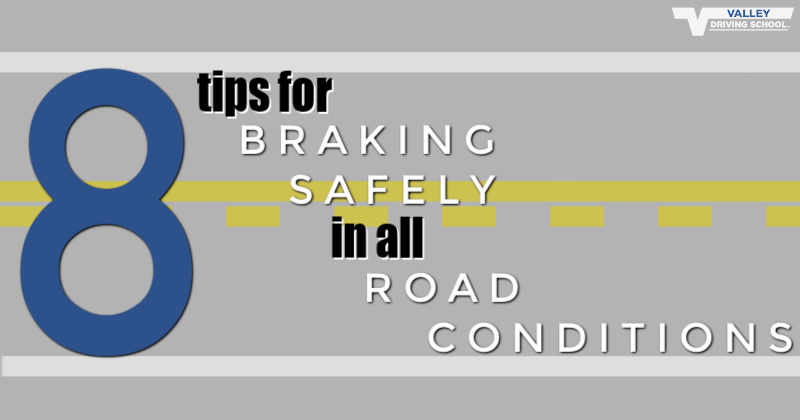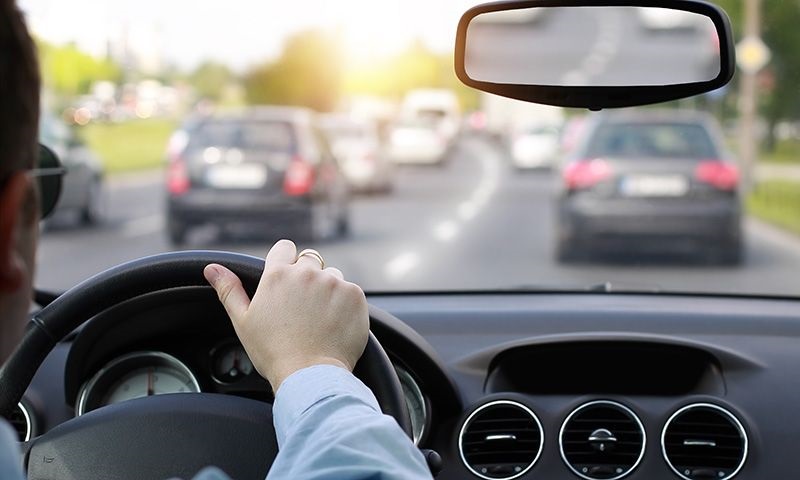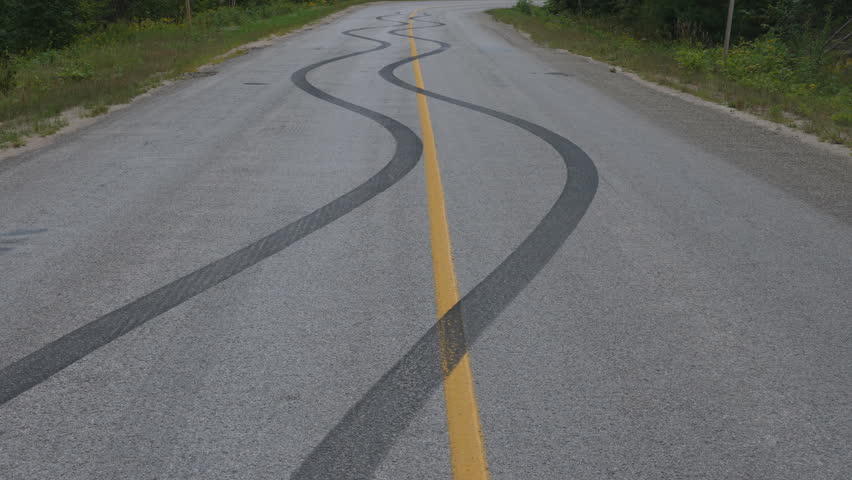Braking is an important part of driving and requires just as much attention, knowledge, and skills to operate than the accelerator or steering wheel. It’s fundamental to know not only how to brake properly but also how to adapt your braking techniques for various road conditions and traffic situations.

We’ve put together our top 6 tips for braking - adopting the safest braking habits and adjusting your braking for different situations - to help you feel confident and safe while out on the road.
8. Scan
Always scan the area you’re stopping or slowing down in to ensure smooth braking. Have you ever had something or someone run out in the middle of the road unexpectedly? Your braking shouldn’t always feel like that. Knowing what’s in front of you is essential to braking smoothly and safely. As you look ahead, scan to the left and right so you can see what’s happening in front of you, but also in adjacent lanes and along the sides of the road. Your eyes should be constantly moving, and you should be taking in new information at all times.

By scanning your surroundings regularly, this allows you to utilize the see-think-do driving behaviour. When you see a problem ahead while you’re driving, it will take you about three-quarters of a second to see a hazard and think (decide to stop) and another three-quarters of a second to do (placing your foot on the brake pedal until you stop).
7. Visibility
If you’re facing low visibility due to a high volume of traffic, it’s best to focus on braking as a means of slowing down and controlling your speed. Leave ample space between your vehicle and others if possible, and be aware of your surroundings so that you are prepared to brake quickly and in a controlled manner if needed.
6. Brake Early
Depending on what the driving conditions are, brake as early as 20 or more feet before reaching the stopping point, or as ICBC recommends, leave two seconds worth of space between you and the vehicle in front of you in ideal conditions. The best practice is to adjust that distance accordingly depending on not only road conditions, but the volume of traffic as well. Increase your following distance to at least four seconds in less than ideal conditions, such as bad weather, uneven roads, or slippery roads. This not only ensures a smooth brake and safe stop, but could protect you from a rear-end accident.
5. Wet Road Conditions

During heavy rainfall when the road is covered in water, hydroplaning is a very real risk. This is where your vehicle begins to ride the water, instead of the road. It doesn’t need to be torrential downpour for this to happen either! The road only needs to be slightly damp for your vehicle to take up surfing. Slowing your speed by removing your foot off the gas pedal gradually is essential during this time, if brakes are slammed on quickly it could cause your vehicle to skid or spin completely out of control
4. Icy Road Conditions
Similarly, for snow and cold weather you want to avoid suddenly having to hit your brakes should there be a patch of ice. Easing off the gas pedal gradually and minimizing your brake use is recommended for these conditions. Should you hit a patch of ice and begin sliding, remove your foot from the gas, steer your vehicle safely away from hazards, and calmly pump your brakes rather than ‘slamming’ them.

The only exception here is if your brakes have an anti-brake lock system (ABS). This system works to automatically pump your brakes in a fast succession for you rather than one swift halt (‘slamming’) that locks your brakes, keeping your vehicle easier to control. If you come to a stop sign and notice you aren’t slowing down as effectively due to snow buildup or are sliding on the ice, push your brakes all the way down to activate the ABS. You will feel small kick-backs pulsating from your brakes, and this is completely normal – do not remove your foot until you have come to a complete stop.
Ensure your vehicle has ABS before doing so and try not to rely on this feature alone. Other safety precautions are important as there is always a chance your brakes can lock up even with ABS. Make sure you inspect your vehicle regularly during seasonal changes and implement the best practices for winter driving to prepare your vehicle for icy conditions.
3. Foggy Road Conditions
In foggy conditions, being aware of your following distance and maintaining a safe distance from other drivers is critical. Check your mirrors before braking to see if there is a vehicle close behind you, then when it is safe to do so, begin to brake slowly. Your brake lights will alert any vehicles behind you that you are slowing down and the gradual rate at which you are braking will help keep you from rear-ending another driver should they suddenly become visible through the fog.
2. Emergency Braking
Even when you scan carefully and maintain adequate following distance unexpected hazards can occur and you may need to use emergency braking. The key to emergency braking is to stop as quickly as possible without locking the brakes, which could result in skidding and a loss of steering. How you handle emergency braking will depend on if you have an anti-lock braking system (ABS) or not. Most new vehicles have ABS, which allows you to brake and steer at the same time, which cannot be done with ordinary brakes. You can check if your vehicle is equipped with ABS in the owner’s manual.
To stop suddenly in an emergency if your vehicle is equipped with ABS: first, press down hard on the brake pedal and hold it down until you come to a complete stop. Do not pump the brakes, and look and steer in the direction you want to go.
To stop suddenly in an emergency if your vehicle is not equipped with ABS: first, press down hard on the brake pedal but not hard enough to lock the wheels. Then quickly release the brake and press hard again to regain control if you start to skid. Look and steer in the direction you want to go. There may be occasions when you brake hard enough to lock the wheels, if stopping is more important than steering.
1. Skid Control
In addition to locking the brakes, skidding can also occur due to slippery surfaces or by changing speed or direction too suddenly. Skidding can be avoided by slowing down and utilizing those same see-think-do skills we mentioned earlier. You are not doomed if you find yourself skidding and you can regain control as long as you stay calm and focused on what you are doing.

As you find yourself skidding ease off the accelerator, and look and steer smoothly in the direction you want to go. Don’t brake, as this will make the situation worse. In many cases, trying to regain control results in overcorrecting and you may find yourself skidding in the opposite direction. The next step remains the same - stay off the accelerator, and look and steer smoothly in the direction you want to go. This is something that you may need to repeat a few times until your vehicle has straightened out and you’ve regained total control.
Remember that whenever you skid due to slippery surfaces, it’s important to drive with caution after you have regained control as it is likely you will encounter another slippery section along the same road.
BONUS
Hearing some unusual noises in the form of squeaks, grinding, or nails on a chalkboard? It’s definitely time to take your vehicle in for some brake maintenance! Since your brakes are a core component of your driving safety, any noise that happens while braking should be looked into immediately.
--
Staying alert and staying aware of your surroundings is an integral part of driving safely, and being ready to adjust your braking techniques based on road conditions will help you get home safely too!
